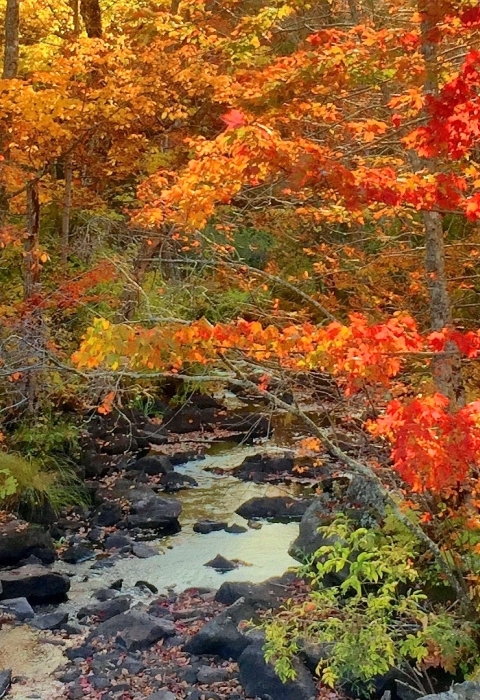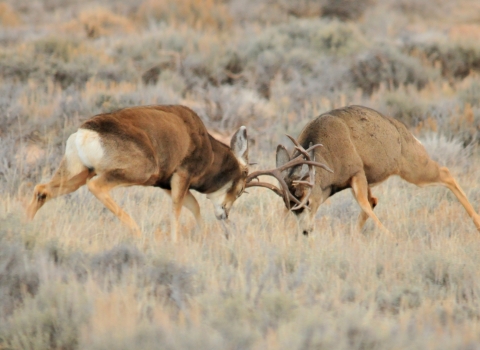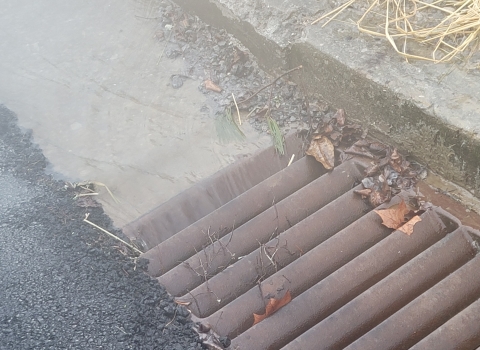The phrase “fall foliage” is practically synonymous with the Northeast.
A visit to a national wildlife refuge national wildlife refuge
A national wildlife refuge is typically a contiguous area of land and water managed by the U.S. Fish and Wildlife Service for the conservation and, where appropriate, restoration of fish, wildlife and plant resources and their habitats for the benefit of present and future generations of Americans.
Learn more about national wildlife refuge is a wonderful way for you and your family to connect with and enjoy nature as leaves turn from summer greens to autumn reds, yellows, pinks, purples and oranges.
There are 72 national wildlife refuges in the U.S. Fish and Wildlife Service’s Northeast Region, which stretches from Virginia and West Virginia up to Maine.
Most of those refuges are gorgeous places for fall walks.
Fourteen of them are shown on this map.
Let’s take a short photo tour of a few of them.
“Fall is that magical time on the refuge when the oppressive summer heat has finally abated, the frenetic nesting season has passed, and the natural world takes a quiet, reflective pause,” says Wertheim National Wildlife Refuge visitor services manager Ann Marie Chapman. “The refuge offers a feast for all the senses: dazzling colors, delicious scents, soft breezes and a quiet chatter all provide the attentive visitor with an enchanting experience.”
The White Oak Trail through woodlands features scenic vistas of the Carmans River and wetland overlooks.
Silvio O. Conte National Fish and Wildlife Refuge consists of several units in four states that offer views of breathtaking fall foliage in the Connecticut River Valley of New England.
The Mollie Beattie Bog Boardwalk and Trail near Island Pond, Vermont; the Mud Pond Trail off State Route 116 near Jefferson, New Hampshire; and the Fort River Birding and Nature Trail in Hadley, Massachusetts, are accessible to all visitors, including those with mobility challenges.
“You might see American woodcock, American black duck, barn swallows, bobolink and American kestrel,” says visitor service manager Jennifer Lapis. “Other animals seen in these areas include wild turkeys, moose, painted turtle and white-tailed deer.”
“The crisp scent of evergreens in the air, a mosaic of colors that are painted for the beholder, and songs of birds in the background signal fall is here,” Canaan Valley National Wildlife Refuge manager Ron Hollis says. “Fall holds many different colors, fall flowers, and hardy evergreens for the hiker, artist, photographer or child to enjoy.”
The West Virginia refuge features more than 31 miles of trails through its high-elevation wetlands, grasslands and forests. The peak time to see the beauty of the Canaan Valley is mid-September to early October, Hollis says. He adds that early morning or late afternoon are his favorite times to walk the trails – when the sun is rising or setting.
Brooklynites, Manhattanites, residents of Queens, the Bronx, Staten Island, Newark and Jersey City: Do you want to get an infusion of nature this fall? Consider an outing to Wallkill River National Wildlife Refuge, just 65 miles northwest of Times Square on the New Jersey-New York border.
“Crisp, cool air, colorful hues, frosted mornings and wildlife abound to make fall a great time to visit,” says wildlife refuge specialist Chelsea Utter. She recommends walking the 2.5-mile Liberty Loop Trail: “A section of the trail overlaps with the famous Appalachian Trail that runs from Georgia to Maine, so visitors can say they hiked a national wildlife refuge and a portion of the Appalachian Trail.”
“Returning waterfowl by the thousands use Missisquoi National Wildlife Refuge wetlands,” refuge manager Ken Sturm says about autumn. “Cooler temperatures and spectacular fall foliage make exploring the 7.5 miles of refuge trail even more rewarding and a delight for the nature photographer.”
Sturm is partial to the 2.5-mile Jeep Trail along the Missisquoi River because it showcases the largest and most intact silver maple-sensitive fern floodplain forest in Vermont. “Visitors will have the opportunity to see a variety of waterfowl, often white-tailed deer and almost certainly a few bald eagles,” he says.
Note: The Jeep Trail is closed in the second half of November for hunting season and from April 1 through August 1 for migratory bird breeding season.
Will you be in Philly this fall? Take a walk along the boardwalk or a trail at John Heinz National Wildlife Refuge at Tinicum.
The refuge is about 10 miles south of downtown, just across I-95 from Philadelphia International Airport. It features 10 miles of walking trails and 4.5 miles of canoe/kayak trails through tidal Darby Creek.
“It is difficult to pick a favorite trail on the refuge, as both the water trail and the trail along Warbler Woods will make you pause with the colors they bring,” says refuge manager Lamar Gore.
In this 90-second video, young Philadelphian Kevin Tran explains why the refuge is a great place to visit year-round. “Thirty minutes away, I don’t see red foxes. I don’t see river otters or bald eagles,” says Tran. “It’s such a nice place to be.”
“Fall at Umbagog National Wildlife Refuge is a splash of colors, wildlife and chilly temperatures. As waterfowl migration starts, the mountains surrounding Umbagog Lake turn brilliant shades of red, yellow and orange intermixed with the green of spruce and fir trees,” says refuge manager Paul Casey. “This is the perfect time to hike the Roost Trail overlooking the Magalloway River or better yet paddle the Magalloway River and see the wildlife up close.”
The moderately difficult, 1.1-mile walking trail winds through forest land above the Magalloway River. The paddling trail launches at the refuge headquarters and leads to Umbagog Lake and the Androscoggin River. Along either route, you might see moose, deer, eagles and other birds.
At Iroquois National Wildlife Refuge in western New York, “the vibrant colors of seasonal change, along with the constant hum from duck and geese on the marshes, lets you know that fall has arrived,” says refuge manager Tom Roster. Thousands of migrating waterfowl gather on the refuge marshes, visible from four overlooks and five trails.
“Particularly during September and into October, the Great Bay National Wildlife Refuge landscape becomes a veritable poster child for the classic fall foliage look that New England is so well known for,” says visitor services manager Matt Poole. He recommends the William Furber Ferry Way Trail, a two-mile loop that passes through forest, goes along a beaver wetland and open fields, and offers a beautiful view of Great Bay itself. Deer, turkey, and many birds – both resident and migratory – are frequently encountered along the trail.
“Rachel Carson National Wildlife Refuge gives you a glimpse of what Maine looked like before the high-rises, before highways, before residents and tourists, back even to the time before Maine was settled and fall leaves and wildlife were the only tenants,” says former refuge intern Phoebe Clark.
Along the Carson Trail near refuge headquarters in Wells, Maine, there is a broad range of wildlife: chipmunks, squirrels, songbirds, Canada geese, wild turkeys, hidden raptors and the occasional deer, muskrat, raccoon or rabbit. “Because winter is fast approaching, wildlife that hibernate are extremely active as they forage for the months ahead,” Clark says. “The fall season also begins owl nesting, so the owls are active and often visible while creating their nests, mating, and incubating.”
Four other Northeast refuges that offer gorgeous autumn tableaus are:
- Occoquan Bay National Wildlife Refuge, 25 miles south of Washington, DC, in Virginia
- Sunkhaze Meadows National Wildlife Refuge, 12 miles northwest of Orono, Maine
- Patuxent Research Refuge, between Washington, DC, and Baltimore, Maryland
- Wapack National Wildlife Refuge, 25 miles northwest of Nashua, New Hampshire
To find a refuge near you, please go to the Visit the National Wildlife Refuge System page and scroll down to the interactive map.




















